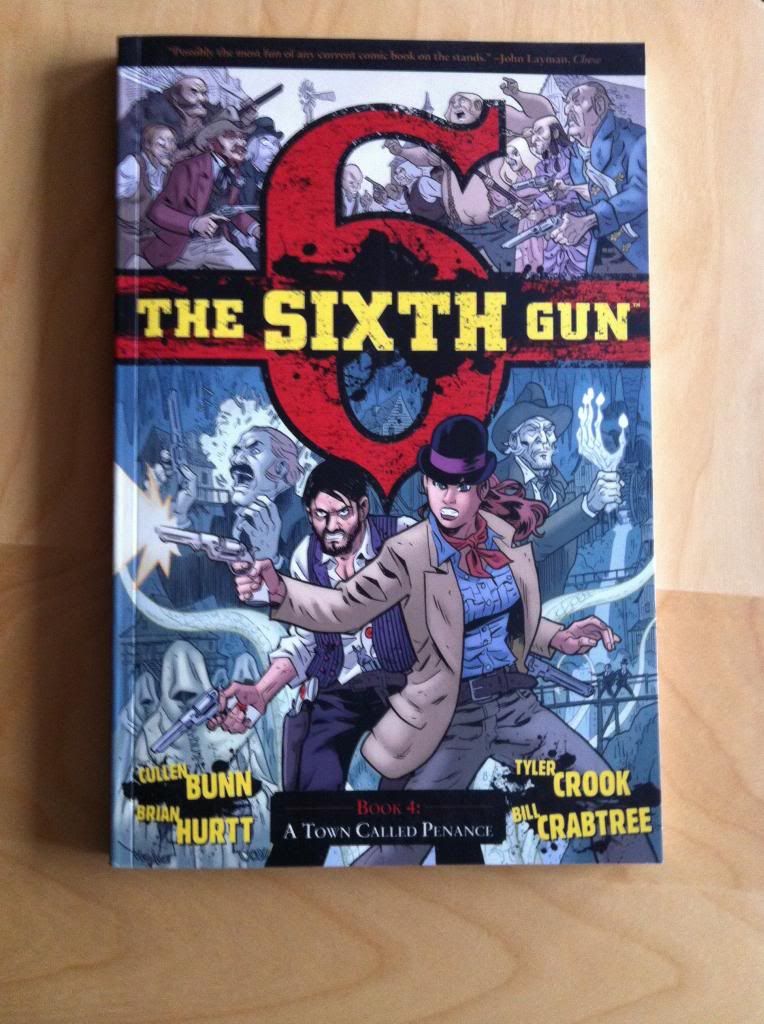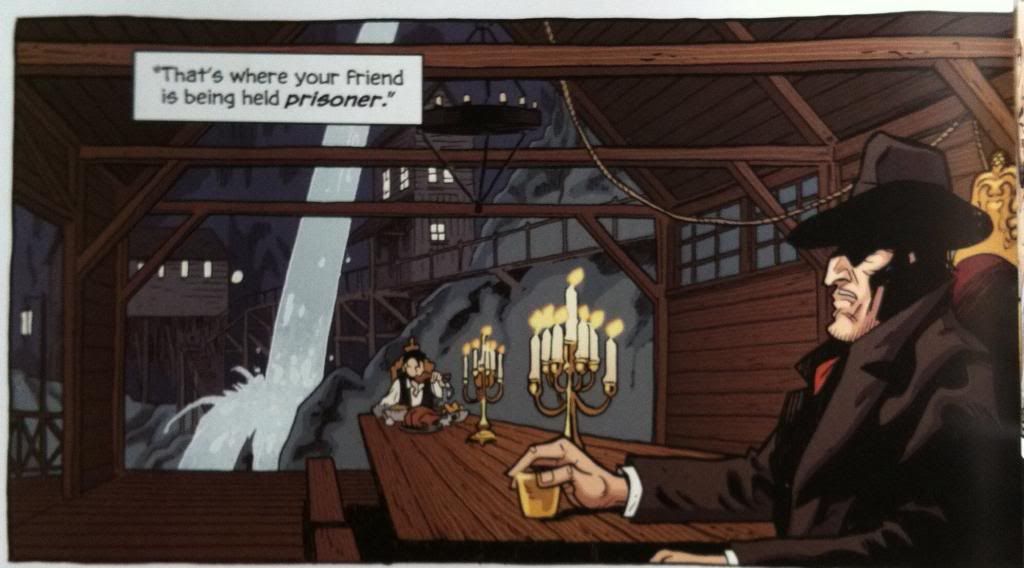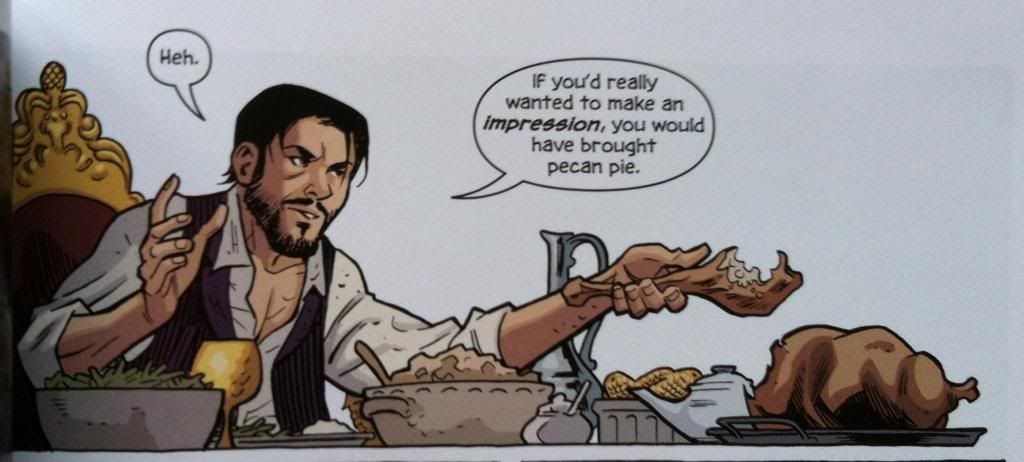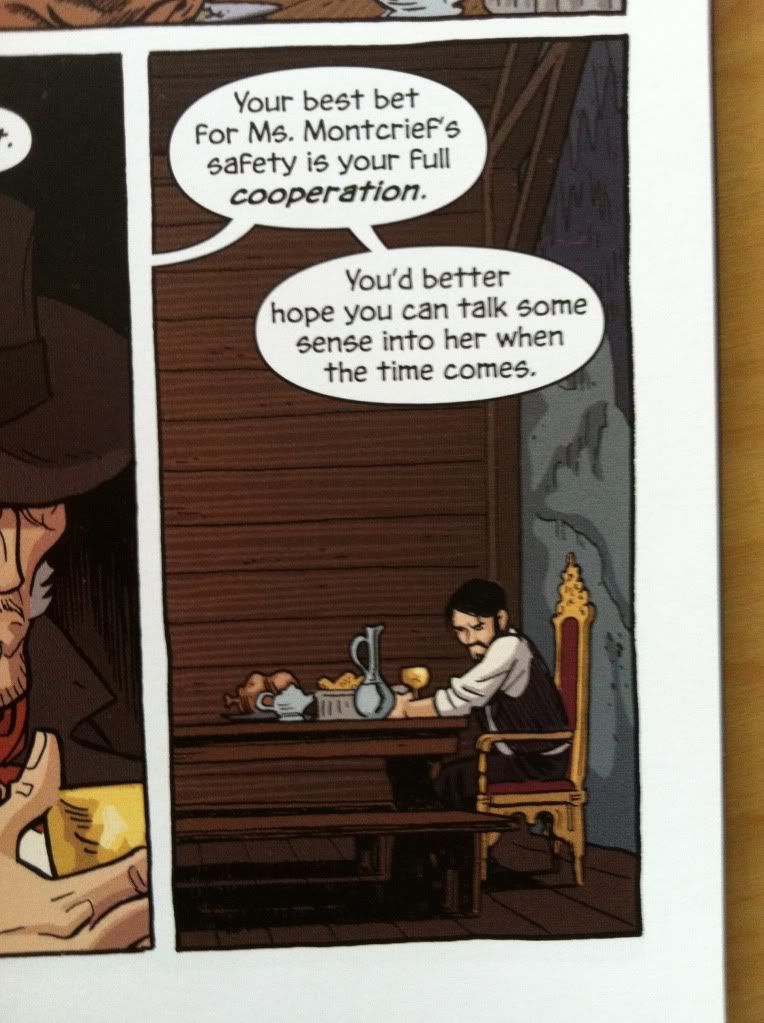Or the tiny attention to detail at a particularly large table in The Sixth Gun: A Town Called Penance
By Cullen Bunn, Brian Hurtt, Tyler Crook, and Bill Crabtree; Oni Press
The Sixth Gun is a pretty great comic that spins a modern take on American folklore in a kind of wonderful weird western. The story is great and the artwork is excellent, usually in ways that are, well, obvious. There are action sequences in this comic (the deaf, waterwheel-tumbling sequence in Chapter 4 comes to mind) that are as dynamic, chaotic, and thoughtful as anything you will find in comics. But the thing that struck me about The Sixth Gun's visual storytelling, is just how clear and thought out even the quiet, dialogue intensive portions of the comics are laid out. And I want to take a closer look at one sequence in particular and explain why I think it is so effective.
There will be *SPOILERS* in the following post for The Sixth Gun Vol. 4. Proceed appropriately.
The scene I want to talk about is a conversation that takes place between a captured Drake Sinclair and his capture Gabriel. The object of this conversation is that Drake had formally been a member of The Knights of Solomon, and Gabe wants to convince Drake to come back into the fold. It's very much your genre standard conversation between your morally flexible hero and your powerful, villainous mastermind along a long table.
What I love about this scene is how every image is framed and blocked so to emphasize some aspect of the discourse which enhances the emotional resonance of the entire scene.
The majority of the panels in this exchange are arranged to emphasize the physical separation between Drake and Gabe, either by using angles that emphasize the length of the table (like in the top image) or like in this panel where the physical separation between the two characters requires a panel break. This distance is a wonderful visual representation of the rhetorical space between the two men: they are far apart because they their way of seeing the world are miles apart.
The other layout trick used in this sequence is a bit subtler. The vast majority of Drake shots have him facing from left to right, while Gabe is mostly seen looking right to left (that is when they aren't staring straight out of frame). This cements their position on opposite ends of the long table, but is also another great visual metaphor for disagreeing: the characters literally have opposing views. Again this helps cement the impression of the pair as being diametrically opposed.
(Also, the above panel is great because the choice to exclude the background helps emphasize all of the earthly food and golden temptations in the foreground of the panel, which is another major element of the back and forth between these characters.)
But the thing that cements this sequence as being particularly great is its very last panel. It is at this point that a combination of threats, bribes, and promises finally appears to break through to Drake and convince him to rejoin the Knights. And this is shown in a panel that has Drake, still sitting in the exact same location, face back right to left. Basically, the very same panel where Drake changes his view of things sees the man literally appear to change his view and move to a position that physically resembles that of Gabriel. It's such a small detail, but within the context of the composition it speaks volumes. It's absolutely great comics and emblematic of the sharp storytelling choices that are made throughout The Sixth Gun.
Previously:
The Sixth Gun





No comments:
Post a Comment